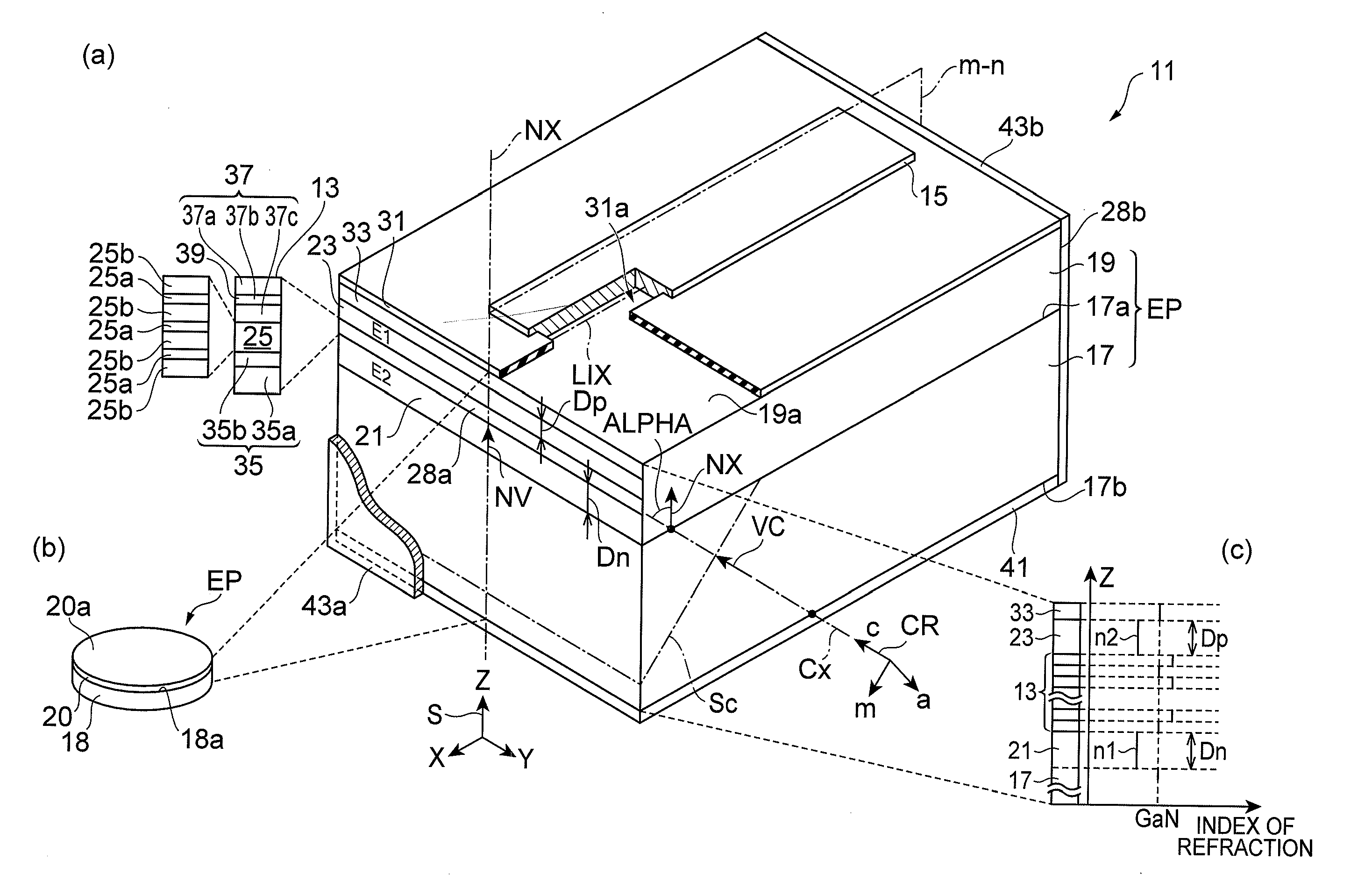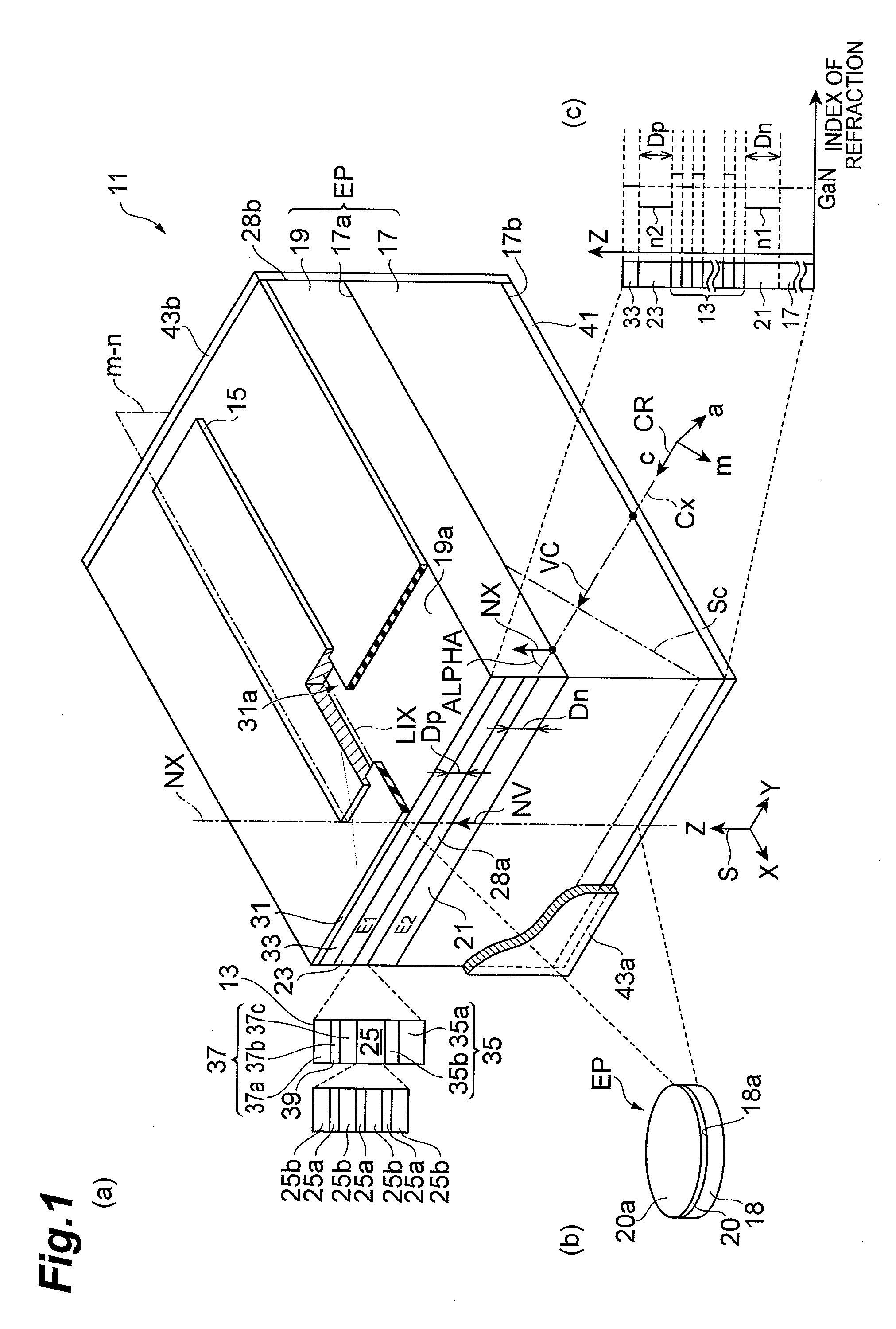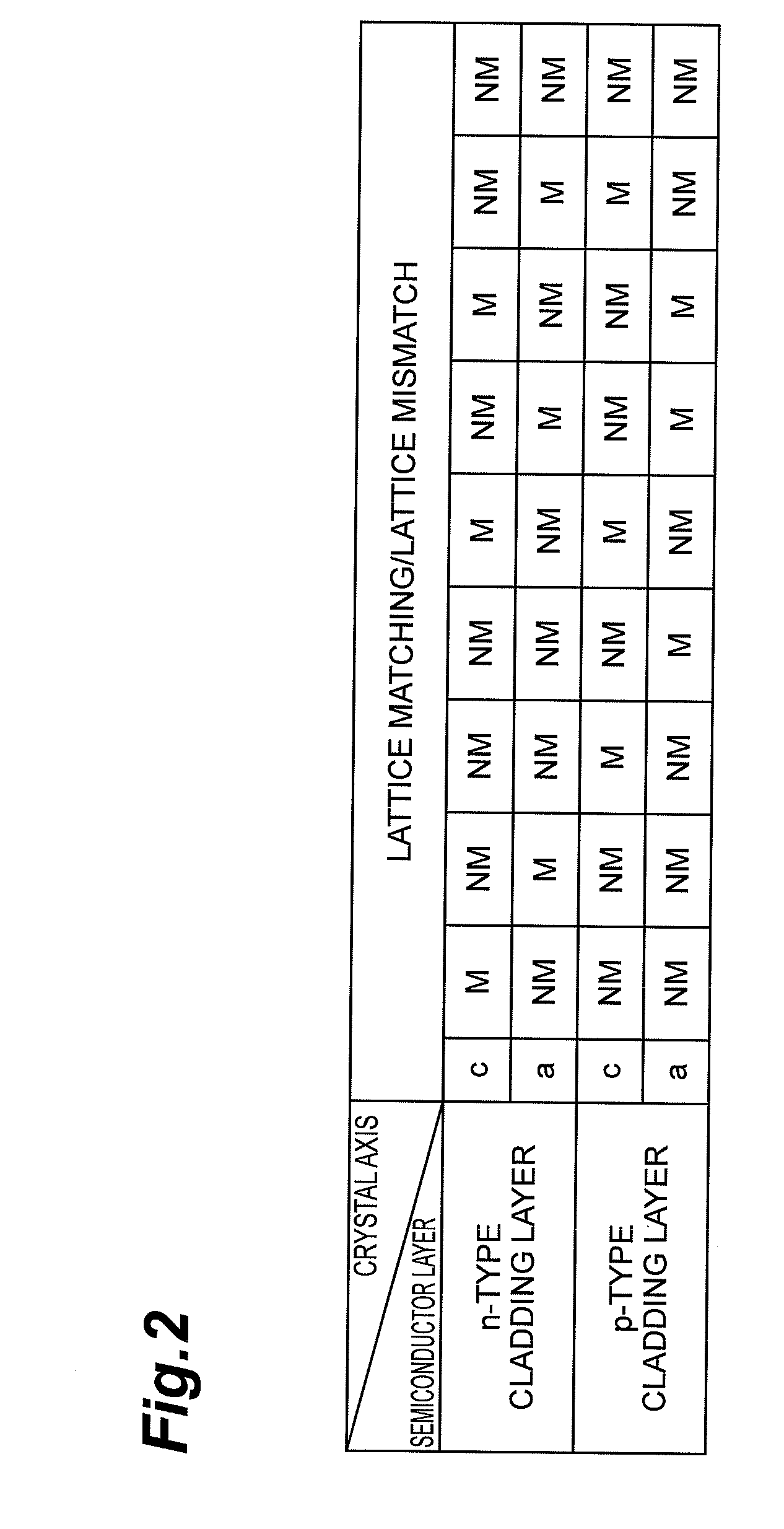Group iii nitride semiconductor laser device, epitaxial substrate, method of fabricating group iii nitride semiconductor laser device
a laser device and semiconductor technology, applied in semiconductor devices, lasers, semiconductor lasers, etc., can solve the problems of reducing the critical thickness, reducing the thickness of the algan cladding layer, and increasing the aluminum content of the algan, so as to reduce the strain and reduce the effective refractive index
- Summary
- Abstract
- Description
- Claims
- Application Information
AI Technical Summary
Benefits of technology
Problems solved by technology
Method used
Image
Examples
example 1
[0132]FIG. 8 is a schematic view showing a group-III nitride semiconductor laser device according to Example 1. Part (a) of FIG. 8 is a schematic view showing the structure of the group-III nitride semiconductor laser device. Such a group-III nitride semiconductor laser device is produced under the process conditions listed in part (b) of FIG. 8.
[0133]A group-III nitride substrate is prepared which has a semi-polar front surface. In this example, a GaN substrate 51 which is prepared has a semi-polar front surface tilting toward the m-axis at an angle of 75 degrees. The plane orientation of the semi-polar front surface corresponds to the {20-21} plane. A semiconductor region having an LD structure LD1 operable in a lasing wavelength band of 520 nm is grown on the semi-polar front surface of the GaN substrate 51. The GaN substrate 51 is placed in a growth reactor for pre-processing (thermal cleaning). Such pre-processing is performed in an ammonia and hydrogen atmosphere for ten minut...
example 2
[0140]FIG. 10 is a drawing illustrating the structure of a semiconductor laser device composed of an epitaxial substrate having several laser structures formed on the (20-21) GaN plane. Several laser epitaxial structures are grown on the (20-21) GaN plane under growth conditions that are the same as those in Example 1 except for the thickness of the cladding layer. The laser epitaxial structure illustrated in part (a) of FIG. 10 is the same as the structure in Example 1. Referring to part (b) of FIG. 10, the n-type cladding layer has a large thickness. Referring to part (c) of FIG. 10, the n-type and p-type cladding layers have a large thickness.
[0141]An epitaxial substrate having such a laser epitaxial structure is made through a laser production process, such as that described below. An insulating layer, such as a silicon dioxide layer, is grown on the laser epitaxial structure. Then, wet-etching is applied to the insulating layer in order to form a window of a strip shape with a ...
PUM
 Login to View More
Login to View More Abstract
Description
Claims
Application Information
 Login to View More
Login to View More - R&D
- Intellectual Property
- Life Sciences
- Materials
- Tech Scout
- Unparalleled Data Quality
- Higher Quality Content
- 60% Fewer Hallucinations
Browse by: Latest US Patents, China's latest patents, Technical Efficacy Thesaurus, Application Domain, Technology Topic, Popular Technical Reports.
© 2025 PatSnap. All rights reserved.Legal|Privacy policy|Modern Slavery Act Transparency Statement|Sitemap|About US| Contact US: help@patsnap.com



